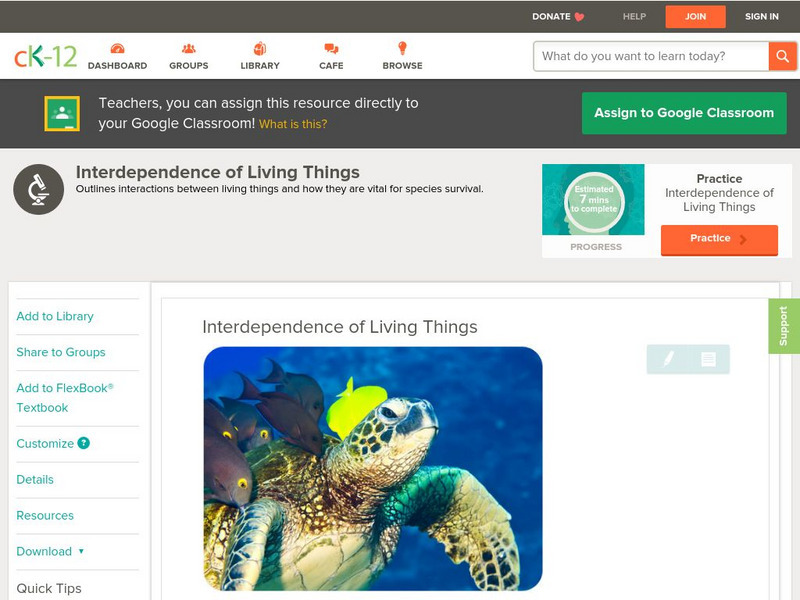National Geographic
National Geographic: Symbiotic Relationships in Marine Ecosystems
In this lesson learners analyze videos to make observations about species, populations, and communities of organisms and discuss their symbiotic relationships. Then they create a hypothetical marine ecosystem and describe the adaptive,...
NC State University
North Carolina State University: Symbiotic Relationships
Includes a description of symbiosis in general, then lists and defines types of symbiosis including mutualism, commensalism, parasitism, competition, and neutralism. Includes a chart which summarizes the different types of relationships....
University of Nebraska
University of Nebraska State Museum: Parasite Sleuth: Where Parasites Live
This site highlights 10 parasites, including worms, insects, ticks and microorganisms. For each organism you can get information concerning their life cycle and geographic distribution.
University of Nebraska
University of Nebraska State Museum: Brazil Nut Tree Community
Investigate the numerous symbiotic relationships that exist between the Brazilian Nut Tree and six other organisms in its community.
Oswego City School District
Regents Prep: Ecosystems/communities
Abiotic factors vary in the environment and determining the types and numbers of organisms that exist in that environment. Factors which determine the types and numbers of organisms of a species in an ecosystem are called limiting...
CommonLit
Common Lit: Clownfish and Sea Anemone
Clownfish and sea anemone have a special relationship-a "symbiotic relationship." As you read, take notes on the specific ways in which clownfish and sea anemones contribute to their symbiotic relationship. It also offers a guided...
CK-12 Foundation
Ck 12: Biology: Interdependence of Living Things
[Free Registration/Login may be required to access all resource tools.] Covers how species interact with each other.





